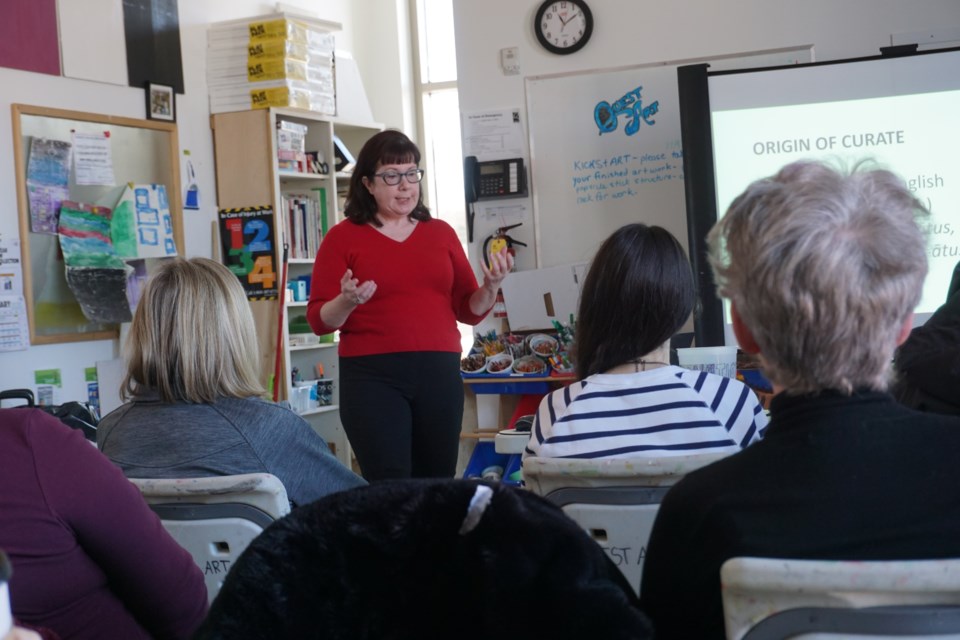Virginia Eichhorn is often taken aback by what some people now consider ‘curating'.
The Quest Art School + Gallery executive director and curator said the word has essentially been hijacked in many of today’s conversations with little regard for what it actually means.
“It’s become one of the most overused and misused terms used these days,” Eichhorn said. “It’s now a catchphrase. Choosing your coffee beans, adjusting your sock drawer or organizing your spice rack is not curating. That’s arranging things.”
Eichhorn said she believes the word’s metamorphosis from its 14th-century, middle-English and Latin roots meaning can likely be traced back to a certain demographic.
“Millennials picked up on the word and started to use it regularly,” she said, noting the word’s origins actually means ‘taking care'.
Eichhorn explored the topic of curating during a recent seminar at Quest that attracted about 25 area residents.
And Eichhorn knows of what she speaks, thanks to more than 25 years working in the visual arts field, including nearly a decade as director/curator at the Tom Thomson Art Gallery and five years as a curator at the Canadian Clay & Glass Museum.
Besides the apparent evolution of the word curating’s actual meaning, Eichhorn has seen lots of changes over her career’s course. She is a graduate of the art history program at Queen’s University and continued her studies in art history and museum studies at the University of Toronto.
She said putting together an exhibition can take four to five years from concept to realization.
“Curating involves critical thinking,” said Eichhorn, who views ecological and environmental art as her oeuvre.
“It involves a tonne of research since you’re looking at an expansive way to get things out there. It’s not collecting, but more of a process than simply offering a collection of items.
As well, Eichhorn said appealing to the younger generation remains of essential import to most curators nowadays.
“At the Tom Thomson Gallery, a lot of it was about making it relatable for contemporary times,” she said. “Curating itself hasn’t really changed, but tools have with new technology. A decade ago, you would have to look at catalogs to view exhibits.”
Another big change is the view of female artists held by some in the industry with Eichhorn vividly recalling a day at the Thomson gallery where she opened a closet and found a treasure trove of works by women.
“Why were they perceived as not as important? When I started exhibitions were often curated by art criticism, history, philosophy...very much male thinkers.”
As an independent curator, Eichhorn has presented exhibitions at numerous prestigious venues including the XII Biennale of Art at Vila Nova Cerveira in Portugal. She has also worked extensively with artists from across Canada and abroad, including Carl Beam, Judy Chicago, Vessna Perunovich, Jane Ash Poitras and Peter Von Tiesenhausen, developing exhibitions for high-profile Canadian galleries and museums.
“I’ve done a lot of curating in traditional and non-traditional spaces. There’s a real relationship that develops between the curator and the artists. They will often work together over time.”



